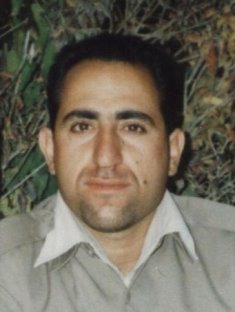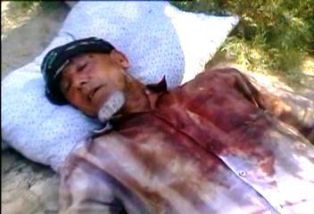Iranian Minorities’ Human Rights Organisation (IMHRO)
Ref. IMHRO.43
15/02/2009
Preface
Minorities in Iran took part in the 1979 revolution with hopes for a better future with more political and cultural rights but 30 years on they are still suffering from the same old problems and on a much bigger scale. Minorities are still denied the rights of education, worship, customs, employment and political, economical and social rights. IMHRO highlights some issues regarding the last 30 years treatment of minorities in Iran.
The fact is that without the involvement of minorities in Iran, the 1979 revolution would not have been possible; the tragedy is that they were among its very first victims.
“Comparing the human right of minorities in Iran before and after the revolution, the post revolution human right situations of minorities in Iran are much worse than pre revolution, although many issues are just continued from the pre-revolution period but on a much bigger scale” said Reza Washahi, a researcher on minorities in Iran.
Religious minorities
Sunnis
Sunnis in Iran are suffering from high unemployment, the Iranian government is destroying their mosques and study centers, their leaders are under constant pressure and many of them have been kidnapped and murdered. The Iranian government is trying to convert Sunnis to Shia. The body of 80-year Sheikh Hasan Rastegar, a Sunni cleric, was found alongside his son in the courtyard of the Dowlatabad Mosque of Kermanshah[1]. Rastegar and his son disappeared on June 2nd 2005. Molavi Abdulghudos and Molavi Mohammad Yousef Sohrab, both Sunni Baluch, were executed in 2008[2].
Christian
Christians in Iran are persecuted and are not allowed to worship openly. Former Muslims who have converted to Christianity are at risk of execution all the time in Iran and they are charged with apostasy. Such Christians run a potentially dangerous risk. Under Islamic law as practiced in Iran, a Muslim who converts to another faith can face the death penalty[3].
The persecution of those who converted to Christianity started in the very early days of the revolution. Christians were marked as western plotters against Iran and anti-revolutionaries. Their property was targeted and many of their leaders murdered.
The Right Reverend Hassan Dehqani-Taftin was the Anglican Bishop in Iran from 1961 and among those who welcomed the revolution; he wrote to Ayatollah Khomeini pledging support for the building of a just, equal and free Iranian society. But he was arrested, And Church hospitals and blind missions were confiscated, the bishop's house was looted, and later its occupant was arrested and temporarily detained. Then, one night in late 1979, two gunmen scaled the wall of the bishop's house in Isfahan, entered the bedroom he shared with his wife and opened fire. Miraculously, the first four shots narrowly missed – Margaret Dehqani-Tafti still has the pillowcase with its four bullet-holes – and the fifth passed through her hand as she flung her body across her husband to protect him. In May the following year the bishop's secretary, Jean Waddell, was also shot. Few days later his son, Bahram was shot and killed. He was returning from work when his car was ambushed[4].
Reverend Hussein Soodmand of Mashad who was converted to Christianity was executed by hanging[5].
Mehdi Dibaj was an Iranian Christian convert from Sunni Islam, finally tried by an Islamic court in Sari on December 3, 1993 and sentenced to death on charges of apostasy. Following a worldwide outcry initiated by his friend and colleague Bishop Haik Hovsepian Mehr, Dibaj was finally freed in January 1994, although the death sentence was not lifted. Just three days later Bishop Haik Hovsepian Mehr was abducted and murdered. Dibaj was abducted on Friday, June 24, 1994. His body was found in a west Tehran park on Tuesday, July 5, 1994[6].
Bahá’í
Bahá’í in Iran have been suppressed and frequently accused of being part of the Shah’s regime although in fact, Bahá’í have been persecuted even during the Shah’s regime. Almost every month there is news of Bahá’í being arrested in Iran. Since the Iranian revolution, more than 200 Baha’is have been executed or killed, hundreds more have been imprisoned, and tens of thousands have been deprived of jobs, pensions, businesses, and educational opportunities. All national Bahá'í administrative structures have been banned by the government, and holy places, shrines and cemeteries have been confiscated, vandalized, or destroyed[7].
Judaism
Jews in Iran are under pressure and always accused of working for Israel. On March 16, 1979, Habib Elghanian, the honorary leader of the Jewish community, was arrested on charges of "corruption", "contacts with Israel and Zionism", "friendship with the enemies of God", "warring with God and his emissaries", and "economic imperialism". He was tried by an Islamic revolutionary tribunal, sentenced to death, and executed on May 8[8].
Mandaeism
Mandaeans are being forced to convert to Islam. Since the 1979 revolution, their populations are started to decline for the first time in two thousand years. A few years ago their meeting in the city of Ahwaz was raided by Special Forces.
Ethnic Minorities in Iran
Arabs
Arabs have been persecuted from the start of the revolution in Iran. Although more than 90% of oil and gas, which is the main base of budget in Iran, comes from their land, they have not benefited from it. In early 1980, General Madani ordered repression of Arab protests in Mahammarah (now renamed as Khorramshahr). He ordered navy commandos to conduct the ethnic cleansing of Arabs and to kill any Arabs they found in the city of Mohammareh near to the Iraqi border and in All of South west of Iran. He also used Argentinean style dumping of live Arabs in bags in the river to drown them. And as a result thousands of Arabs were killed[9].
In recent years execution and arbitrary arrest have been increased[10].
The Iranian government has been confiscating Arab lands and allowing non Arabs to settle there. After a letter by Mohammad Ali Abtahi, a member of President Khatami’s administration, regarding changing the demography of Khuzestan (Al-Ahwaz) came out, demonstrations started in the Arab areas. The government targeted the demonstrators by using live ammo[11].
Kurds
In 1981 ayatollah Khomeini issued a fatwa, called Kurds infidels and ordered the air force to bombard their town and villages[12]. For the next ten years, guerilla fighting broke out and thousands were killed. Abdul Rahman Qasimlu, leader of Secretary-General of the Kurdistan Democratic Party of Iran (PDK), was assassinated in 1988 in Austria by the Iranian security service. A few years later, on 17 September 1992, his successor Sadigh Sharafkandi was also assassinated by the Iranian security service at the Mykonos Greek restaurant in Berlin, Germany[13].
In recent years pressure on the Kurdish population in Iran has increased. Mohammad Sadiq Kabudwand, the founder of the Kurdistan Human Rights Organisation, was sentenced to 10 years in prison and denied medical treatment. Kaveh Aziz Poor, a Kurdish man who was from a village near Mahabad city, lost consciousness under torture and after 20 days died in hospital in the city of Uromiyeh. Farzad Kamangar, a Kurdish teacher and environmental campaigner, was sentenced to death. Hiwa Butimar, a Kurdish Journalist and Environmental activist, for second times, sentenced to death. Both Farzad Kamangar and Hiwa Butimar are still on death row[14].
Baluch
Baluch people are under pressure. Yaghub Mehrnahad, a civil rights activist, was executed last year by the Iranian government[15]. His 17 year old brother was sentenced to 5 years in prison[16]. Baluch are persecuted and their political leader was hanged after a fabricated charge of drug trafficking. According to the official statistics of Iran, 76 percent of the Baluch people live below the poverty line. Increasing unemployment and poverty motivate a large number of Baluch young people to fight for justice and equality opportunities[17]
Turks
In the very early days of the revolution Ayatollah Shariatmadari [18]and his Muslim nation party, which called for greater right for Turks, was suppressed[19]. The government forced Ayatollah Shariatmadari to confess on state TV that he was plotting against the government. They then kept him under house arrest and when he was diagnosed with cancer they denied him medical treatment.
In recent years many Turkish cultural and political activists who call for human right of Turks have been arrested. There was a protest over a cartoon in 2006. The cartoon was published in a state-owned newspaper. It showed a succession of people attempting to talk to a cockroach in Persian. Each time, the insect responded saying, in Azeri, "What do you mean?"[20] _ Thousands came out onto the streets of Turkish cities and the Iranian government arrested many. About 10 people were reported to have been killed.
Farhad Mohseni Negarestan, 25 year old Turk, was killed under torture while he was interrogated by the Iranian intelligence service[21].
Turkmen
Very soon after the revolution, Iranian revolutionary guards attacked Turkmen areas and killed many. Since then, the Turkmen have suffered from the terror of Iran's revolutionary guards. In 1983, violence broke out when the revolutionary guard tried to prevent Turkmen women from working on farms and going about unveiled. This type of persecution, along with the Iran-Iraq war, caused many of them to flee to Turkey[22]
In 2008 Iranian security forces killed fishermen and broke up a big demonstration after that. The Iranian government arrested many and reportedly tortured them[23].
Abdulgafur Setaesh is Director of the Center for Human Rights of Turkmenistan of Iran, a Canada-based human rights monitoring group. Mr. Setaesh said friends and relatives of the young fisherman protested about the killing to Iranian military authorities[24].
According to Amnesty International, “scores, if not hundreds of Turkmen have reportedly been taken to Zahedan in Sistan-Baluchistan province, possibly to make it harder for families to find out what has happened to them”. Amnesty International says two of the detainees, Jamshid Arazpour and Haji Aman Khadivar, are believed to be held incommunicado in Golestan province and “are at risk of torture”[25].
References
[1] http://regimechangeiran.blogspot.com/2005/11/gruesome-murder-of-sunni-cleric-and.html
[2] http://www.payvand.com/news/04/dec/1207.html
[3] http://www.payvand.com/news/04/dec/1207.html
[4] http://www.telegraph.co.uk/news/obituaries/1918728/The-Rt-Rev-Hassan-Dehqani-Tafti.html
[5] http://www.muslimhope.com/IslamReligionOfPeace.htm
[6] http://en.wikipedia.org/wiki/Mehdi_Dibaj
[7] Iran Human Rights Documentation Center (2007) "A Faith Denied: The Persecution of the Baha'is of Iran". Iran Human Rights Documentation Center. http://www.iranhrdc.org/english/pdfs/Reports/bahai_report.pdf. Retrieved on 2007-03-03.
Also
Affolter, Friedrich W. (2005). "The Specter of Ideological Genocide: The Bahá'ís of Iran". War Crimes, Genocide and Crimes Against Humanity 1 (1): 59– 89. http://www.aa.psu.edu/journals/war-crimes/articles/V1/v1n1a3.pdf.
[8] Littman (1979), p. 5.
[9] http://iranianminorityshumanright.blogspot.com/2008/10/imhro-welcomes-decision-of-uk.html
[10] http://www.unhchr.ch/huricane/huricane.nsf/0/31A0C4FE25DC547EC125725F005D3DDA?opendocument
[11] http://en.wikinews.org/wiki/Unconfirmed:_20_dead,_500_hurt_after_protest_in_Iranian_city_of_Ahwaz
[12] http://www.caucaz.com/home_eng/breve_contenu.php?id=182
[13] http://watchingcloseiranianintelligence.blogspot.com/2007/12/germany-releases-mykonos-assassins.html
[14] http://iranianminorityshumanright.blogspot.com/
[15] http://www.unpo.org/content/view/8501/153/
[16] http://iranianminorityshumanright.blogspot.com/2008/11/amnesty-ebrahim-mehrnehad-member-of.html
[17] http://www.pakistanchristianpost.com/headlinenewsd.php?hnewsid=982
[18] http://www.iranian.ws/cgi-bin/iran_news/exec/view.cgi/9/15316/printer
[19] http://www.ghandchi.com/444-azerbaijanEng.htm
[20] http://news.bbc.co.uk/1/hi/world/middle_east/5024550.stm
[21] http://iranianminorityshumanright.blogspot.com/
[22] http://www.cidcm.umd.edu/mar/assessment.asp?groupId=63008
[23] http://www.cidcm.umd.edu/mar/assessment.asp?groupId=63008
[24] http://www.voanews.com/uspolicy/2008-02-15-voa1.cfm
[25] http://www.amnesty.org/en/library/asset/MDE13/072/2008/en/80613b65-28aa-11dd-88e3-17bcbb296f4e/mde130722008eng.html
Subscribe to:
Post Comments (Atom)



























































No comments:
Post a Comment